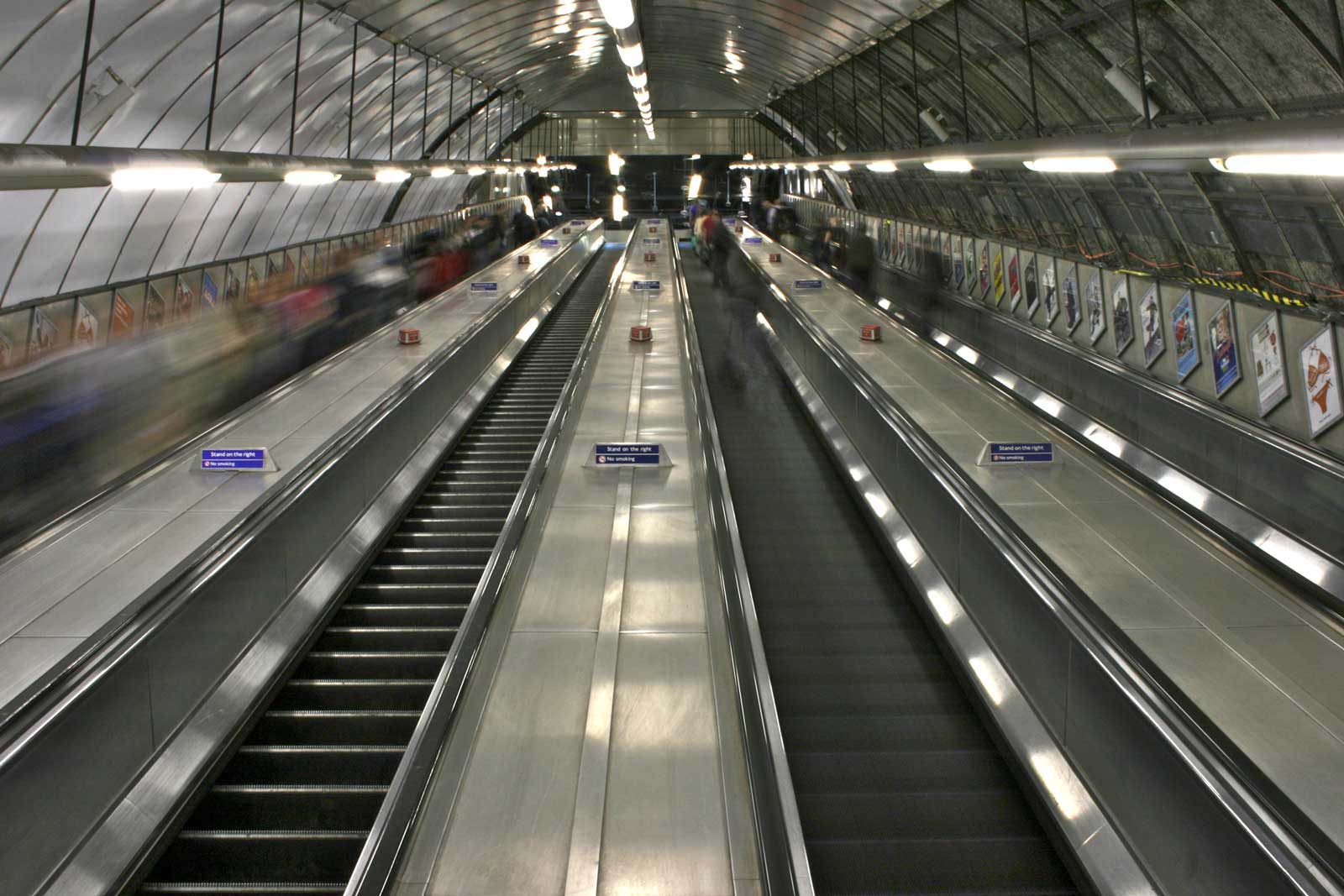Orphans of the Transportation System
Sep 23, 2023

by Selçuk Kuza
The escalator is right in front of you. You will approach without concern in five or 10 steps, will not look out before making a stride toward the first step and will wait for it to take you upstairs. You will go up without even realizing it, as easy as breathing. What a comfort!
The presence of this equipment that we use frequently in urban life does not draw attention. Escalators continue to operate as passengers come and go or even when no one happens to come. In fact, when people reach a point from one point to another by means of an escalator, they cross this distance by means of a machine, but that machine is often not in their area of interest. Its presence and absence are almost the same. The most important reason for this acceptance is that users feel they can continue normally with no major change as they are not in an enclosed area like a lift. There is nothing out of the ordinary for passengers. They were walking and took a break; the machine took them up, and they continued to walk. When the same users get on a lift, they have a different feeling. They examine all around it. If there is another passenger in the car, the situation becomes gloomier. The door is also an important difference. The door of the lift is opened, closed and opened again. The existence of a door disturbs and impacts the subconscious of users. It feels claustrophobic. It can also be said that there is a difference between escalators and lifts, which impacts the personal space of a person. People are highly aware of the lifts. If an elevator is broken in a building, great trouble arises, but it does not get the same reaction as when an escalator is broken, because escalators can be used as stairs even if they do not operate.
The function of a lift operating in a 30-story building cannot be performed by an escalator, just as the number of passengers moved by escalators in a unit of time at a subway station cannot be compared to the number of passengers transported by a lift at the same location. These two machines are fundamentally different from each other. Most moving machines are dangerous when not controlled. However, it is always perceived that lifts are dangerous. Escalators are not perceived to be dangerous as their presence is ignored most of the time. Are they? An escalator moving at an average height has approximately 750-1,000 pieces in continuous motion. Compared to lifts, this number is quite high. Each piece in motion is a potential problem, and it is not possible to control all of them in periodical maintenance by their design. Usually, the issue can only be understood when a problem occurs. The escalator technology is old-fashioned and time-worn, considering the point that technology has reached. There is no manufacturer that puts a worthwhile effort into an improvement. Apart from the unimportant cosmetic-based innovations, no new idea is put forward. What radical changes have occurred since the first escalator was installed in Coney Island in 1895? The most important thing is that the safety measures for escalators are insufficient. They are now equipped to meet all the accident case scenarios that are possible to occur. We live in a period in which foresight is quite important and accordingly, these machines still do not have the technology to foresee hazards. What’s interesting is that both the responsible institutions and those who determine the international standards, alongside the manufacturers, ignore such insufficiencies for a long time.
The number of personnel trained to perform the maintenance, control, repair and revision of horizontal transportation systems properly is so limited that the people in the business brood on how this can be possible. In general, a lift technician performs the maintenance of an escalator. It is totally unknown who will inspect, carry out maintenance and repair them. On the other hand, the problem of spare parts has become a hopeless issue to the core. This has become a problem not only in our country but also across the world. In this regard, it is obvious that the leading local and foreign companies providing design, manufacturing and on-site maintenance services should take on responsibility. One of the most important issues that I have tried to follow for the last decade is related to the educated technical staff. If the well-educated, equipped technical staff are not appreciated by their institutions deservedly (personal benefits, fringe benefits, career opportunities, trainings), they leave the system with the thought “I will better be the head of my own business” after some time. A few of these adventures result in a success story. In conclusion, the system loses its educated staff. In the next period, the companies that embrace their personnel will leave their competitors behind regarding especially the maintenance works.
As a matter of fact, horizontal transportation systems give alarm. Accordingly, the cases of accidents — whether they are reflected in the press or not — increase day by day. It is an unacceptable point of view to ignore horizontal transportation systems as their penetration is low compared to the lifts. It is crystal clear that the responsible official institutions and trade associations should act, keep problems on the agenda and create solutions regarding the horizontal transportation systems, which will become a major problem sometime soon.
I wish safe working hours for all industry shareholders.
Get more of Elevator World. Sign up for our free e-newsletter.











